We checked out of the hotel around 11:30 AM into a waiting cab. The traffic was not so heavy at this time of day and the trip was quick. The huge check-in line we saw as the taxi pulled up to the cruise terminal made our hearts drop a little. There was a porter waiting to take our checked bags as they were unloaded. As we turned with the remaining luggage we saw the “Priority Boarding” sign which was our queue. As we entered our stateroom Gail’s watch read 12:15 PM.
After boarding the Diamond Princess and doing a bit of exploring we went for our typical boarding day hamburger at the Trident Grill. Now here’s some comparisons. We have been on the Queen Elizabeth for three weeks, eaten in the LIDO repeatedly and only once been offered beverage service, this afternoon a waiter was at our table almost as we sat down. Another comparison, along with the beverage service waiter came several others offering wine tasting events and coffee cards for sale, whereas on the QE we never encountered such solicitations.
It was evident even from our hotel room that the Diamond was much larger than the Queen Elizabeth. From our third floor window we could see the top of the opera house and, with a little concentration, make out features of ships at the Overseas Passenger Terminal. The only bits that were visible on the QE superstructure were the two white, spheres atop the vessel that house communications stuff. The upper two decks of the Diamond were quite visible over most of the ship’s length. Once on board the size differences were even more apparent. From the upper decks residential east Sydney could be seen over the Opera House peaks.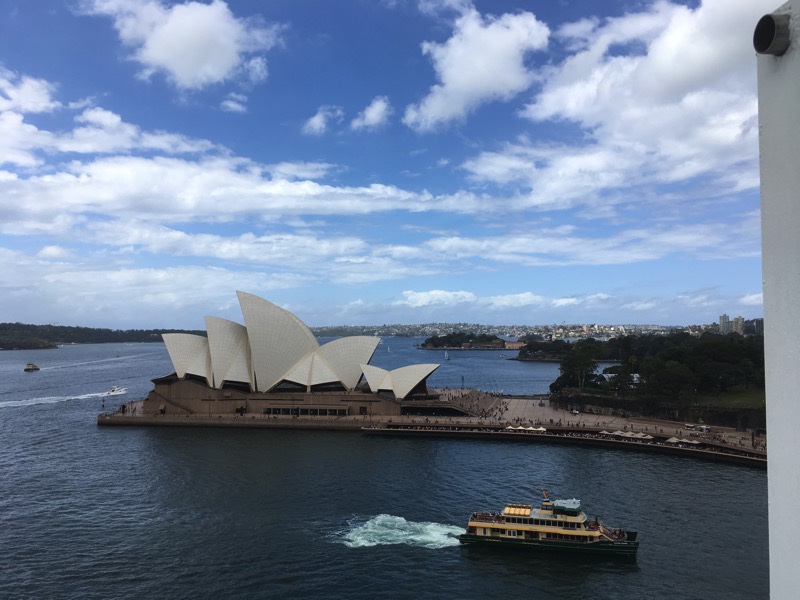 On the other side, the view was of the roof of the terminal rather than the upper floor windows of the building.
On the other side, the view was of the roof of the terminal rather than the upper floor windows of the building. As the Diamond set sail she had a huge impact on the ferry boats and pleasure craft. The Diamond’s turning circle requires most of the approach to Circular Quay docks. The eleven mile trip to the ocean offers some great views of Sydney. Once clear of the harbour she turned southward, steering a course paralleling Australia’s east coast. Our first contact with Tasmania should occur after about 40 hours and some 600 nautical miles after departing Sydney. As a result, we are traveling at a leisurely 12 knots.
As the Diamond set sail she had a huge impact on the ferry boats and pleasure craft. The Diamond’s turning circle requires most of the approach to Circular Quay docks. The eleven mile trip to the ocean offers some great views of Sydney. Once clear of the harbour she turned southward, steering a course paralleling Australia’s east coast. Our first contact with Tasmania should occur after about 40 hours and some 600 nautical miles after departing Sydney. As a result, we are traveling at a leisurely 12 knots.
Until this point all of the photos have been taken with my trusty iPhone SE. The next bit, on Sunday March 4, will be costal cruising therefore it is time to bring out the Fuji with it’s 700 mm zoom. I will have to sacrifice the geographical metadata but that’s life. Of course, having not used this camera for quite a while some of the buttons will be mysterious for a short while. Perhaps I’ll take it out for a spin on deck before we arrive in Hourglass Bay.
Sunday morning, March 4, finds our position just east of the coast of Tasmania. Early this morning the ship shuddered slightly but otherwise passage through the shallow Bass Strait separating Tasmania from Australia . Between 1:30 PM and 4:30 PM we cruised slowly along the coast of Wineglass and Oyster Bays. The rock formations and white sand beaches provided our first look at the State of Tasmania. Eventually, once back in Sydney with reliable internet and time, there will be more photos of the area, but for now, here are a couple.
Panorama of Wineglass Bay
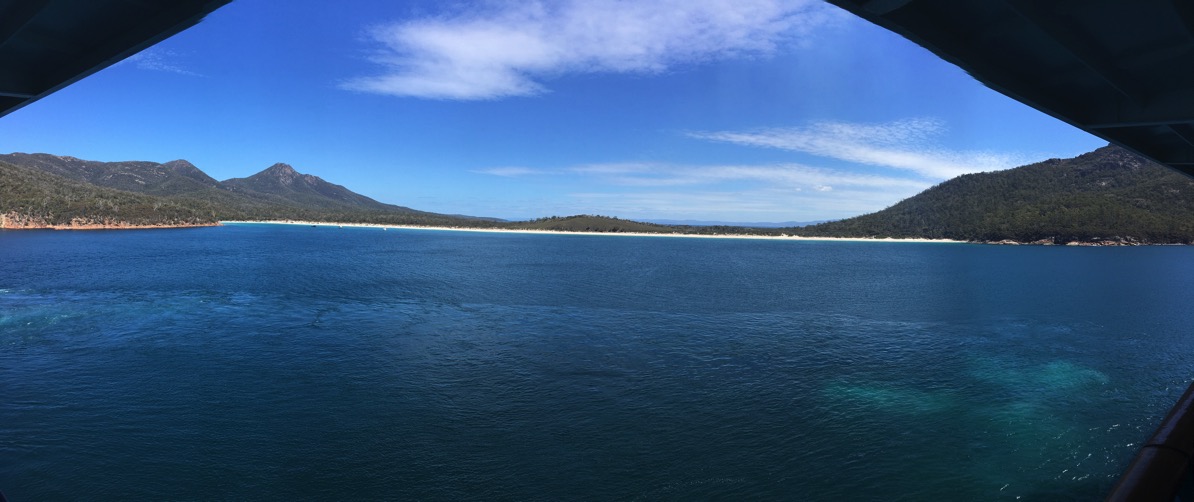
Panorama of Oyster Bay
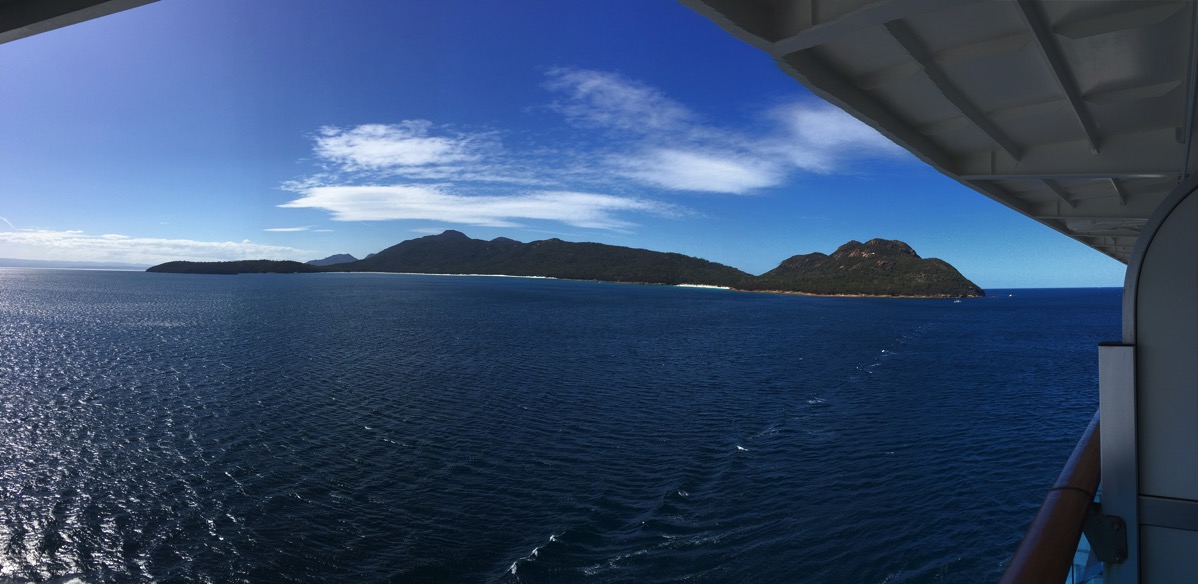
Monday morning we entered the port of Hobart. After a relatively clear sunrise the weather became rather cool and overcast with some sunny breaks. Our berth is at a commercial site with a warehouse as a temporary cruise terminal.
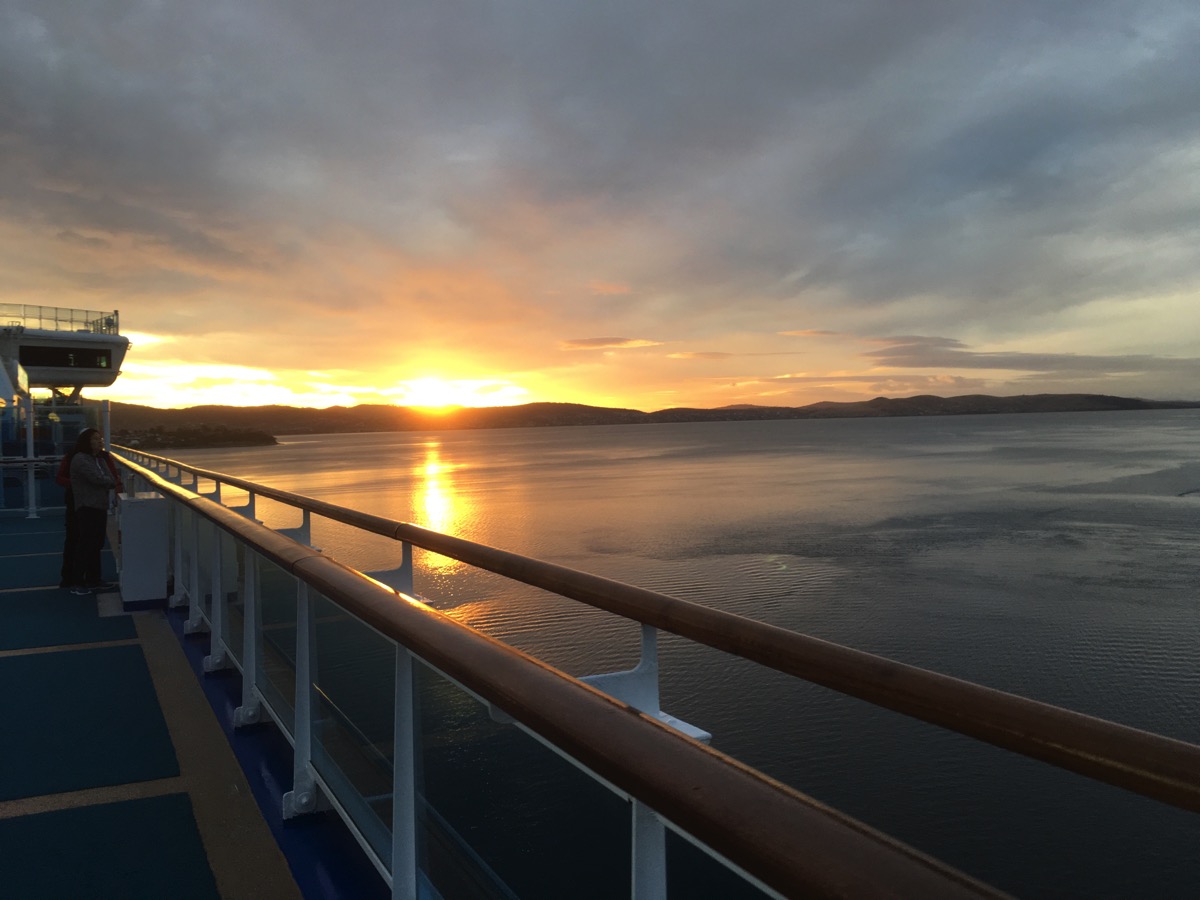
Mount Wellington can be seen directly in front of the ship beyond the city.
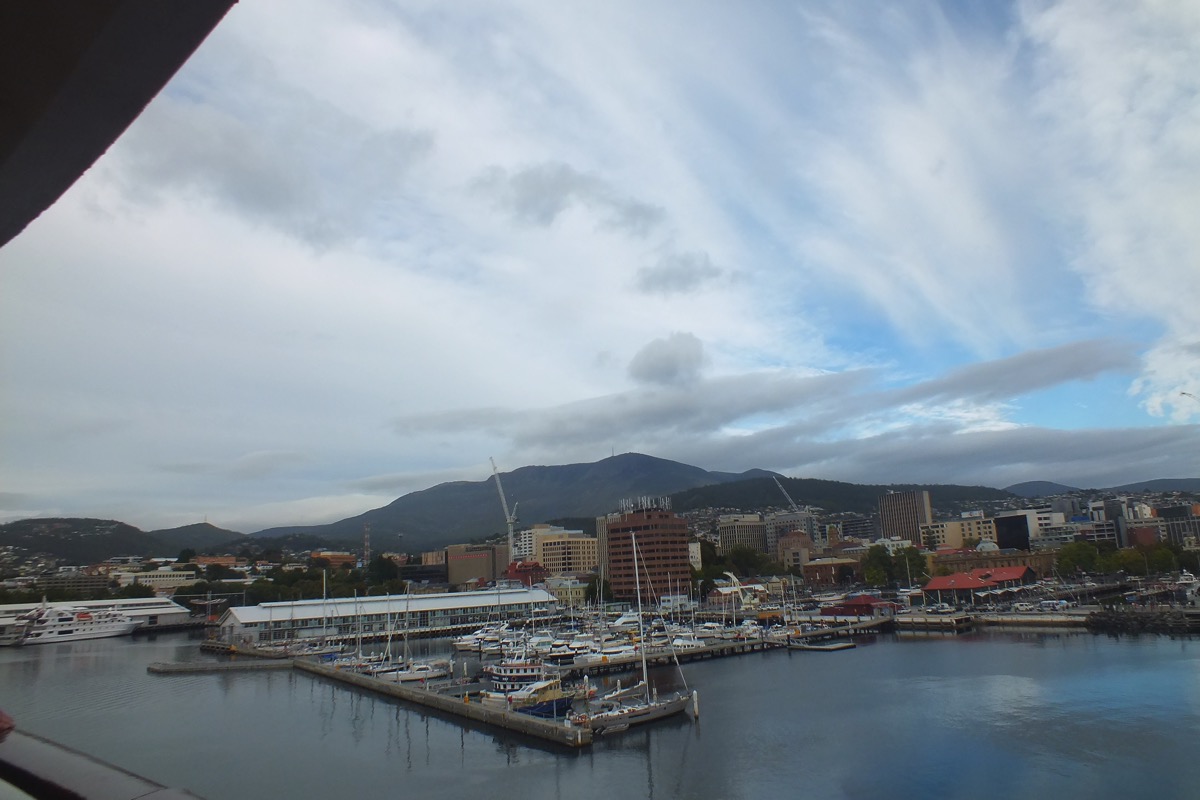
Later today we will take a tour in Hobart then another tomorrow in Port Arthur.
[quotcoll orderby=”random” limit=1]

wonderful to travel with you
blizzarding here today so I am snowed in.
Love Myrna
So much fun to accompany you guys on your travels….